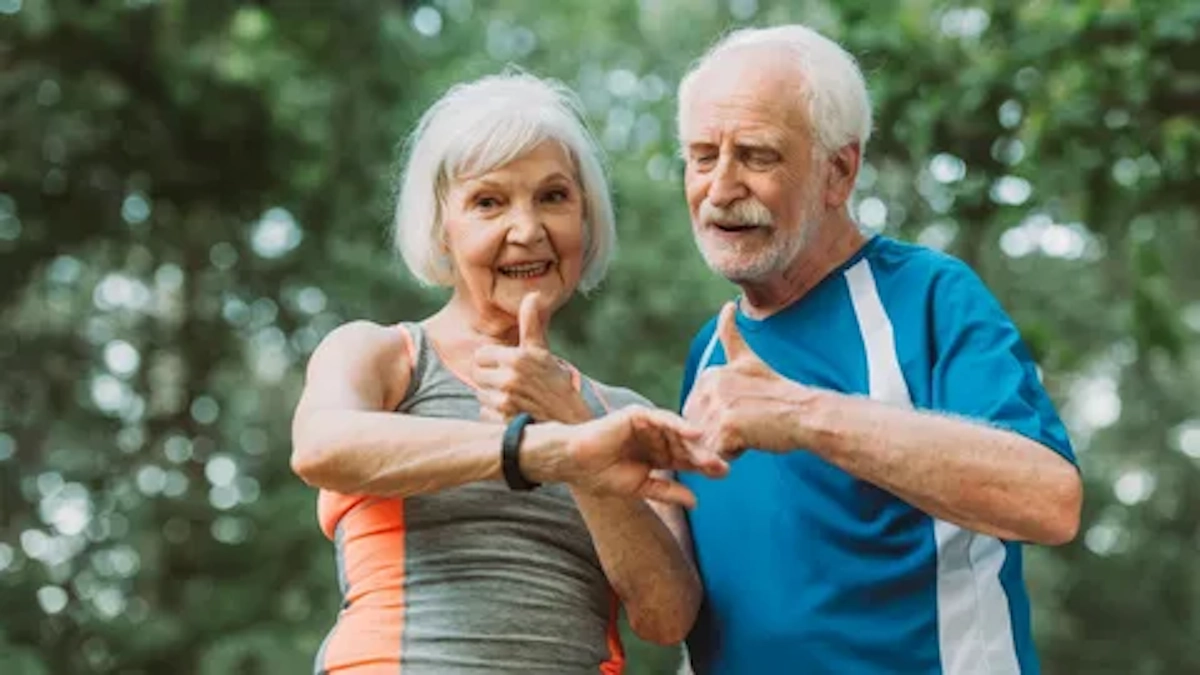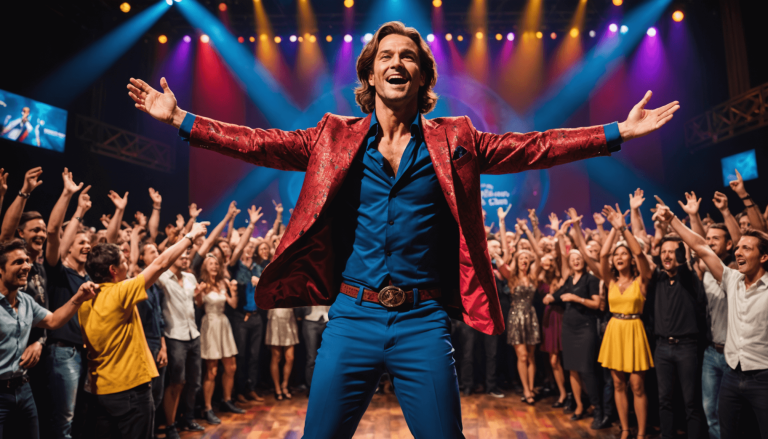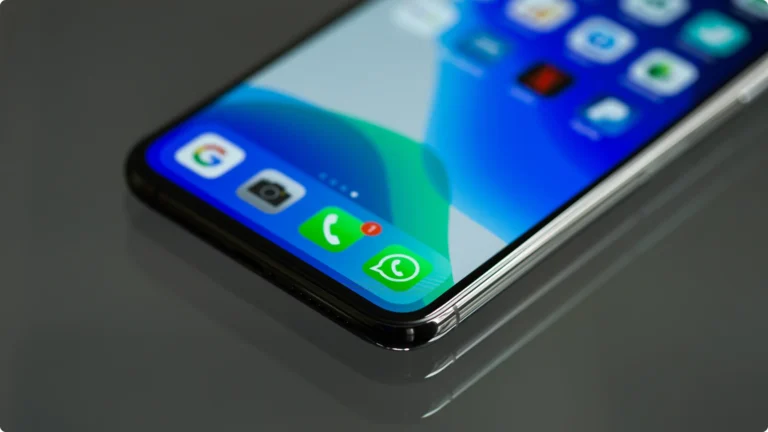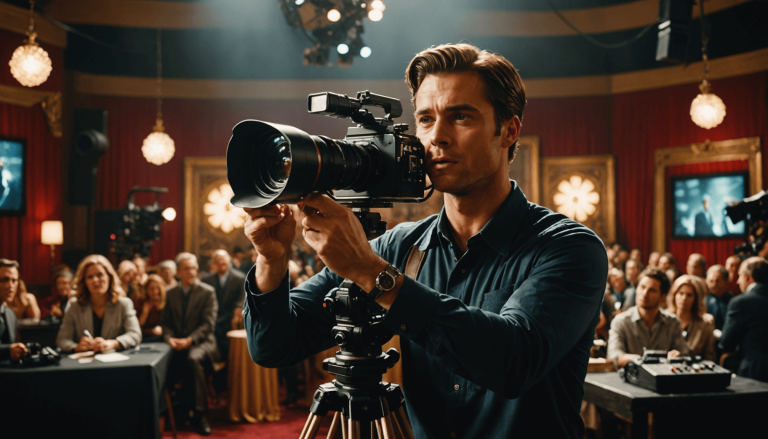Have you ever watched your aging parent or grandparent struggle to remember pills, get help after a fall, or keep up with doctor appointments? That helpless feeling is all too familiar for families—and for seniors, it’s downright frustrating. They want independence. You want peace of mind. Enter the smart watch for elderly. These aren't just …
How Smartwatches Help Seniors Live Better and Worry Less

Have you ever watched your aging parent or grandparent struggle to remember pills, get help after a fall, or keep up with doctor appointments?
That helpless feeling is all too familiar for families—and for seniors, it’s downright frustrating.
They want independence. You want peace of mind.
Enter the smart watch for elderly.
These aren’t just devices that count steps. Today’s wearable tech for seniors is reshaping how older adults live—safely, independently, and with a better quality of life.
Unlike the sci-fi gadgets of the past, these are accessible, purposeful tools.
The best part? Seniors actually enjoy using them.
A 2024 study in JMIR Human Factors found that smartwatches encouraged social connectedness and earned high marks for dependability.
And with features from fall detection to heart rate monitoring, this isn’t just tech—it’s real-life support.
If you’re wondering whether a health monitoring smart watch is worth it for your loved one (or yourself), keep reading.
We’ll break down why these assistive smart watches are no longer luxury gadgets—they’re evolving into one of the most practical investments for aging well.
The Need For Wearable Tech For Seniors
Let’s talk about what’s happening demographically: people are living longer, but not always healthier.
Globally, the senior population is growing at record speed. By 2050, one in six people worldwide will be over 65.
That’s a lot of folks dealing with mobility issues, heart conditions, or just reduced ability to manage daily tasks themselves.
And the truth is, most seniors don’t want to rely on others for everything.
But the risks are real: falls, forgotten meds, silent health issues that creep up unnoticed.
That’s where accessible wearable technology comes in.
Imagine being able to:
- Track heart rate, oxygen levels, and steps—all from your wrist
- Get reminders to take medication or attend an appointment
- Send an SOS with one button if you’ve fallen or feel unwell
This is not fantasy. This is here, now.
Smartwatches designed specifically for seniors are bridging the gap between living independently and staying protected.
These aren’t just souped-up fitness trackers. They’re senior safety wearables that get smarter with every update.
And what’s genuinely impressive?
In rural areas, where access to in-person care is sparse, studies show smartwatches helped seniors increase daily activity and improve walking performance.
According to research in JMIR mHealth and uHealth, seniors used wearable-guided walking programs to lower body fat and boost endurance.
That’s real ROI for a simple device worn on the wrist. ([source](https://mhealth.jmir.org/2018/11/e11335/?utm_source=openai))
Key Health Monitoring Features In Smartwatches
These wearables don’t just look good—they work hard behind the scenes to watch out for your vital signs.
Here’s what you’re getting with health monitoring smart watches today:
Advanced cardiovascular tracking
Start with the essentials—heart rate. Most smartwatches now offer 24/7 monitoring. More advanced models include SpO2 (oxygen levels) and ECG readings.
That means they can catch early signs of stress, fatigue, or even heart issues.
Sleep analysis done right
Poor sleep isn’t just a nuisance—it’s a red flag.
Smartwatches pick up on patterns indicating insomnia or disorders like sleep apnea—well before those symptoms escalate. Tracking sleep cycles helps both seniors and caregivers take corrective action faster.
Fitness encouragement without nagging
Yes, even a gentle reminder to move can make a difference.
Wearables provide nudges based on inactivity, show how many steps you’ve taken, and help with maintaining mobility—even celebrating milestones along the way.
| Feature | How It Helps Seniors |
|---|---|
| Heart Rate Monitoring | Detects abnormalities early and tracks cardiac health trends |
| Sleep Tracking | Identifies disturbances and supports better rest routines |
| Activity Reminders | Promotes light exercise to maintain strength and flexibility |
| SpO2 & ECG | Alerts to low oxygen levels or heart irregularities |
Real-time health data sharing
This one’s for the entire family.
With remote health monitoring, the smartwatch’s collected data can be synced with apps that caregivers or doctors can access.
It’s like giving your loved ones x-ray vision into your wellness without invasive checkups.
Timely medication and event alerts
Forgetfulness no longer means missed doses.
Users can set custom reminders that vibrate gently or display messages—reminders for meds, doctor visits, hydration, or daily tasks.
Storytime: Meet Alan, 72
Alan has lived with high blood pressure for years.
His son gifted him a smart watch for elderly users that tracks BP, reminds him to take meds, and even logs his daily steps.
Within three months, Alan dropped five pounds and reduced nighttime anxiety (he checks his vitals if he wakes up disoriented).
It’s not magic—it’s data empowering decisions.
Smartwatches are no longer passive accessories.
They’re digital companions that help seniors live better, stay safer, and feel more in control of their lives.
And that’s what really matters.
Safety Features in Smartwatches for Elderly Users
Emergency alert systems and fall detection capabilities
What happens if an elderly loved one falls and can’t reach the phone? It’s one of the biggest concerns for families and caregivers. Smartwatches for seniors today come packed with automatic fall detection features engineered to answer that exact worry.
Fall detection works by using built-in motion sensors that track sudden shifts in speed or direction—movements that typically signal a fall. The watch then vibrates or beeps to confirm if the wearer needs help. If there’s no response within a set time, it instantly sends an SOS to emergency contacts or emergency services.
Many smartwatches also include an Emergency SOS feature. With just a push of a button, seniors can alert multiple contacts or call 911. Some models even auto-dial when a high-impact event occurs. It’s like having a medical alert system, only smarter—and always on the wrist.
For adult children and caregivers, these features bring peace of mind. They’re notified instantly when something’s wrong, even from hundreds of miles away. This rapid communication can make the difference between a full recovery and a serious complication.
GPS tracking and location-based safety
When a senior begins dealing with memory loss or early-stage dementia, simple walks or errands can unexpectedly turn into stressful search operations. Here’s where GPS-enabled smartwatches shine.
Real-time location tracking means family members can keep an eye on their loved one’s whereabouts through a connected app, making it easier to respond when their location doesn’t match their routine. For example, if Grandpa Fred takes a spontaneous detour on what was supposed to be a ten-minute stroll around the block, GPS lets caregivers know exactly where he wandered off to.
These watches even allow for customized geo-fencing. If a senior steps outside a designated “safe zone”—like their neighborhood—a notification immediately pings caregivers. It’s an invisible safety net that doesn’t get in the way of their independence but steps in when needed most.
Waterproof and durable design for accident-prone conditions
Let’s face it, slips and spills are part of aging. Whether it’s a dropped watch in the sink or a tumble in the garden, seniors need gear that keeps up with them.
That’s why most smartwatches for older adults now come with rugged casings and water-resistant seals. Whether they’re gardening, doing dishes, or caught in a downpour, these devices keep ticking. High-grade materials, reinforced screens, and secure wristbands reduce the chances of breakage or malfunction.
Comfort also isn’t compromised. Many models offer lightweight, flexible bands and breathable materials that won’t chafe sensitive skin. The durability adds long-term value, meaning these aren’t just gadgets—they’re reliable companions day in and day out.
Elderly medical alert devices vs. smartwatches
Back in the day, medical pendants were the go-to solution for senior safety. But let’s be honest—they weren’t exactly subtle or user-friendly. Today’s smartwatches offer the same life-saving capabilities… plus a whole lot more.
Traditional medical alert devices are often limited to a single function: triggering an alarm when the user pushes a button. They work, but they lack versatility. In contrast, a smartwatch for elderly individuals gives you:
- Health tracking (heart rate, sleep, steps)
- Built-in communication tools (calls and texts)
- Smart reminders for medication and appointments
- Multiple safety features including fall detection, SOS, and GPS
The result is a wearable that’s both proactive and reactive. It doesn’t just act in emergencies—it helps prevent them.
Integration with smart home systems
Here’s a futuristic twist that’s already part of daily life: Smartwatches for seniors are stepping into the role of at-home assistants. Connected to smart home systems, they allow the wearer to control parts of their environment without lifting more than a finger—or even saying a word.
Voice assistants like Alexa or Google Assistant can be activated directly from the wrist. That means turning on lights, locking doors, or adjusting the thermostat is just a voice command away. For someone with limited mobility or vision, this offers a massive boost in independence.
Even alerts and reminders can sync across smart home devices, offering audio or visual cues when medicine is due or the oven’s still on. In short, these smartwatches blend technology and practicality in ways that make senior living not just safer, but smoother.
Lifestyle Benefits of Smartwatches for Seniors
Encouraging active aging and independence
It’s no secret that staying active as we age helps us stay sharp and mobile. But motivation doesn’t magically appear—especially when health issues creep in. That’s where these smartwatches give seniors a nudge in the right direction.
With tailored fitness goals, walking programs, and step counters, they quietly encourage movement throughout the day. Some watches even cheer them on when goals are hit or provide gentle reminders when it’s time to stretch those legs.
Stress is another common issue. Smartwatches now incorporate calming features like guided breathing sessions, mindfulness timers, and stress sensors. One user mentioned it was like having a tiny wellness coach strapped to her wrist—one that doesn’t judge when she skips a step or two.
Simplified communication tools
No one likes fumbling with tiny buttons or blurry screens. Thankfully, modern smartwatches are keeping things intuitive and user-friendly when it comes to keeping in touch.
Built-in calling and texting ensures seniors never miss a connection with their kids, grandkids, or neighbors. And they don’t have to dig through a cluttered purse or rush for a ringing landline.
Large text displays, high-contrast visual settings, and integrated voice assistants mean even those with limited vision or dexterity can communicate with ease.
Stylish design meets senior comfort
Remember when wearable tech looked awkward and out of place? Those days are long gone. Today’s smartwatches for older adults are sleek, modern, and designed with real comfort in mind.
They come in lightweight builds with adjustable straps, rounded edges, and breathable materials. Some are so subtle, you wouldn’t guess they’re packed with all that tech inside. And they don’t scream, “I wear this in case I fall,” either.
Now more than ever, seniors can choose wearable tech that matches their personal style without compromising on their health or safety.
Social engagement and tech-savvy seniors
Who says seniors can’t be savvy tech users? Turns out, when the gear is designed right, older users are more engaged than ever.
Simple navigation, easy-to-read dashboards, and one-touch features build confidence fast. And once seniors start engaging, they discover features that make life more fun. Think step challenges shared with grandkids, or virtual walking clubs that connect users through built-in fitness apps.
That sense of community is powerful. According to one study, seniors using smartwatches felt more socially connected—and not just digitally. These little devices are growing into tools that promote social interaction, mental vitality, and a joy for movement.
Assistive Technology Innovations in Wearables
What if your watch could catch early signs of illness before you even feel it? Or fire off an emergency alert before you can reach your phone? Smartwatches for elderly users are getting serious upgrades—and it’s not just about checking steps anymore.
Let’s talk about what’s changing. These aren’t the clunky devices of a few years ago. We’re seeing AI-driven predictive health analytics surfacing in senior wearables. Think of it like your body having its own 24/7 analyst, crunching your heart rate, sleep, and activity data to flag issues early. We’re talking arrhythmia warnings, blood pressure signals, trends in mobility—all served with a smart nudge or alert.
Also grabbing attention? Biosensors. These mini-labs-on-the-wrist can measure everything from oxygen levels to skin temperature. Early detection of respiratory issues or infection risk? Yep. That’s happening with some of the most advanced models already.
But high-tech doesn’t mean complicated. What’s shifting is how smart these watches are at personalizing your experience—suggesting tips based on your behavior. If your walking slows or your movement dips, the device might give you gentle encouragement: “Let’s take a quick walk” or “Time to stretch those legs.” It’s subtle—but powerful.
Accessibility’s also taken a leap forward. Think easier navigation with voice commands, large touchpoints, and even gesture control. You don’t have to fiddle with tiny buttons anymore. Some smartwatches for seniors now sync with hearing aids or feature loud, crisp speakers for call alerts.
And what about cost? I’ve had caregivers and families tell me that these devices save them the cost of extra nursing visits or full-time in-home care. Fall detection alone triggers emergency help—around the clock—without someone constantly watching. And maintenance? Minimal. You charge it, wear it, and it works. For folks on fixed budgets, that combo makes a smart watch for elderly people an incredible investment.
We’re watching these devices evolve—fast. And honestly? They’re already becoming a key part of senior health management.
How to Choose the Right Smartwatch for Elderly Users
Picking a smartwatch for elderly users shouldn’t feel like trying to choose a spaceship. But with dozens of models tossing around words like “vital sign aggregation” and “multimodal interface,” it can get messy, fast.
Here’s your quick-start checklist of what actually matters when you’re buying:
- Health tracking: Heart rate, oxygen levels, sleep, and mobility.
- Emergency features: Fall detection, SOS alert buttons, GPS.
- Simple UI: Big icons, bold text, sounds or vibration cue feedback.
- Battery life: The longer the better—some can last up to a week.
- Design comfort: Lightweight, non-irritating band, easy on/off clasp.
Budget? You’ve got options. There are entry-level models under $100 that still handle step counting and alerts. On the higher end, features like ECG monitoring, advanced sensors, AI health nudging, and medical-grade accuracy can push you closer to $400 or $500. Decide what’s essential vs what’s shiny.
Usability is where good watches either win or flop. Look for display flexibility—adjustable font sizes, bright high-contrast screens—and one-touch emergency access. That one-tap SOS can literally be a life-saver. And test things like how easy it is to charge, clean, or update. Seniors don’t want to babysit their gear.
And yeah—durability. If it can’t handle a drop or a quick rinse? Keep shopping.
Here are three solid smartwatches for seniors getting solid buzz right now:
- Apple Watch SE with Fall Detection: Super intuitive interface, link to family members, customizable alerts.
- Wellue O2Ring: Focused on oxygen saturation—great for people with asthma or COPD.
- Bay Alarm Medical Alert Smartwatch: Built-in GPS, 4G capability, and emergency dispatch service rolled into a subscription.
Feedback from actual users? Many report feeling safer and more independent. Others highlight daily motivation boosts—just seeing those stats tick upward can drive real behavior change.
Future Potential of Senior Health Tech Innovations
Imagine a world where a smartwatch quietly flags early signs of a condition you didn’t even know was developing—and loops in your doctor before you feel anything wrong. That’s not sci-fi. That’s where the tech is clearly headed.
In the next wave, we’re talking real-time predictive algorithms that feed off years of your personalized data—movement, heart trends, even subtle cues from your speech or gestures. The more a device knows you, the better it gets at catching problems fast.
But future smartwatches for elderly users won’t work alone. The real power will come when they sync directly with telemedicine and clinical tools—sending quality readings straight into virtual appointments and avoiding unnecessary trips to the doctor’s office. You’ve got chest pain at 2 a.m.? Your watch already told your clinician. That’s a game-changer.
Tech creators also know they’ve got to cross a digital divide. Many seniors still hesitate to dive into wearables—and honestly, some of it makes sense. Interfaces can be confusing, syncing apps can be clunky. That’s why we’re starting to see smartwatches that feel more human—instruction-free navigation, voice-first prompts, automatic updates—and this makes a huge difference for adoption.
Long-term? Here’s what we’re heading toward:
- Universal integration: Your smartwatch becomes your digital health passport, always current and ready.
- Passive engagement: Set it and forget it—tech quietly protects you in the background.
- Emotion-aware tech: Devices that detect stress, loneliness, and even early signs of cognitive decline—all from how you move and talk.
What I love? Aging doesn’t have to mean giving up autonomy. These innovations are pushing toward a future where smart tech keeps you in charge, keeps you safe, and keeps you closer to the life you want.
Bottom line: The smart watch for elderly folks isn’t a luxury anymore—it’s quickly becoming the heartbeat of modern elder care.






